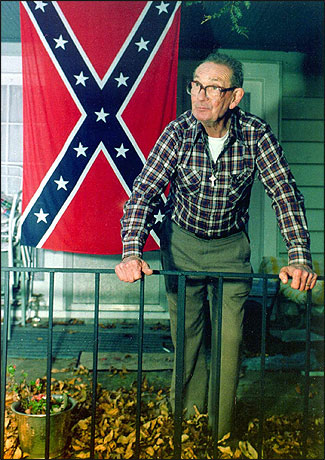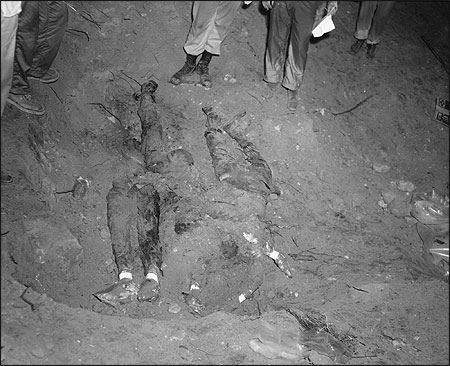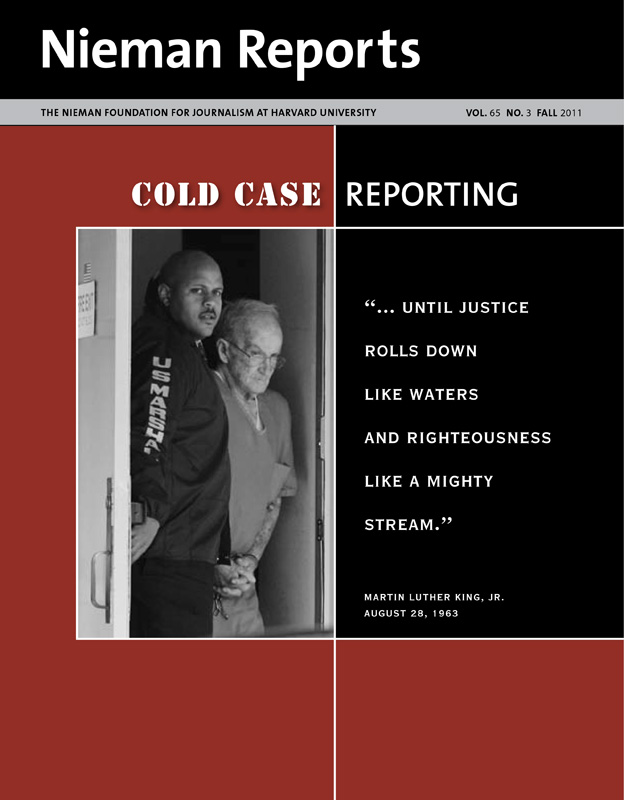Tell me I can’t have something, and I want it a million times more. I remember feeling that way back in 1989 when it came to finding out what was in the files of the notorious, by-then defunct, spy agency known as the Mississippi State Sovereignty Commission, which had fought to preserve white supremacy by any means possible. Modeled after the white Citizens’ Councils that spread across the South in the wake of the United States Supreme Court’s 1954 decision outlawing segregated public schools, the commission was formed two years later with state money behind its fight.
During its heyday, the commission gathered files on 10,000 people and 250 organizations it described as “subversive, militant or revolutionary groups.” In 1977, Mississippi finally did away with what had been acting as a state agency. But then there was the matter of the documents; the commission had gathered more than 130,000 pages of spy files. Legislators voted to seal them and had them placed in a vault in the basement of the Mississippi Department of Archives and History.
No one would get to see them until 2027.
I didn’t want to wait that long. Along with a few others, I was curious to learn what these files contained. The American Civil Liberties Union had sued to open them, but the lawsuit had been dragging on for years with no resolution in sight. So when I walked to the courthouse in Jackson, Mississippi, the city where my newspaper, The Clarion-Ledger, is located, my intention was to find the court documents for that case, J77-0047(B). I found those, and inside the case folder I discovered a lot more. There were several sovereignty commission reports marked “Confidential.” Turns out that the files that were supposed to be sealed had been left open for me (and others) to see.
Here’s the story they started to tell: In the summer of 1964, a spy named “Agent Y,” pretending to be a civil rights worker, had infiltrated the Council of Federated Organizations. After gaining the confidence of council leaders, he stole applications and photographs of incoming Freedom Summer volunteers.
Now that I had had this enticing glimpse, I knew that I needed to find out more of what these files contained. During the next several months, I began developing sources to help me find out. The first leak revealed that Mississippi—through the sovereignty commission—had spied on Michael Schwerner and his wife, Rita, three months before Klansmen killed him and two other civil rights workers on June 21, 1964. The second leak showed that at the same time the state had prosecuted Byron De La Beckwith for the 1963 murder of Medgar Evers, the commission, working on behalf of the governor, had secretly sought Beckwith’s acquittal.

After two hung jury trials—and with new evidence a reporter uncovered—Byron De La Beckwith was convicted in the murder of Medgar Evers. Photo by Jeff Guenther/The Associated Press.
Acting on Evidence
A day after my story about the state’s involvement with the Beckwith trial was published in The Clarion-Ledger on October 1, 1989, Myrlie Evers called for the prosecution of her husband’s assassin, who had been tried twice in 1964 but each trial had ended in a hung jury. The odds of convicting Beckwith seemed impossible. Whatever evidence the state once collected had long since vanished.
At this point, authorities weren’t serious about pursuing a case against Beckwith. I remembered a story from years earlier that mentioned Beckwith was living in Signal Mountain, Tennessee, just outside Chattanooga. When I called the Chattanooga newspaper, they put me in touch with former New York Times reporter Johnny Popham, who said he’d be glad to check.
I do my best to speak to Klan suspects as soon as I learn their names because I realize this may be the only time they will talk. That’s been my experience time and again with these cases. Most of the time, I turn out to be the only reporter to get an interview, and in most of these cases, these Klansmen never speak to authorities.
I view my job as a reporter to assemble whatever evidence exists and put it out there so everyone can see it. By doing this I hope to reveal how the system failed to provide justice. A friend of mine who happens to be a terrific investigative reporter has a button that reads, “I just catch ’em. I don’t fry ’em.” That’s how I feel. My job as a journalist is to expose the truth, as best as I can determine it by the evidence I find and the interviews I do. It’s up to authorities whether they act on it or not.
Weeks later, Popham called back with Beckwith’s unlisted phone number. The white supremacist was still alive, 69 and spry, no less a racist than he had been before.
When I asked him about the Evers family, Beckwith remarked, “I care about them about as much as I do about a nigger getting run over by a streetcar in Chicago. They do still have streetcars in Chicago, don’t they?”
Two police officers had given him an alibi, swearing they saw him filling his car with gas at 1:05 a.m. on June 12, 1963. The precision of the time bothered me. Beckwith hadn’t been arrested until June 22 so there was no way they could have connected his sighting with the killing of Evers until 10 days later. I thought about my own ability to recall. If someone pressed me to say who I saw 10 nights ago, I would struggle to remember names, much less times. I managed to track down the former officers. Their details were different now and so were their times.
When a grand jury was convened in December 1990, prosecutors grilled the former officers, and the alibi they had so obviously concocted fell apart. Grand jurors voted to indict Beckwith for murder. On February 5, 1994, the long-delayed trial ended in the same courtroom where he had been tried 30 years earlier. This time the jury convicted him of murdering Medgar Evers, and he was sentenced to life in prison.
Myrlie Evers and her family rejoiced. Justice had been delayed, but they believed it had finally been realized.

In this undated photo released by the FBI in 2005, the bodies of civil rights workers James Chaney, Andrew Goodman, and Michael Schwerner were uncovered near Philadelphia, Mississippi.
Other cases followed. In 1998, Sam Bowers, the imperial wizard of the White Knights of the Ku Klux Klan, went to prison for ordering Klansmen to kill NAACP leader Vernon Dahmer in Hattiesburg, Mississippi in 1966. In 2002, Klansman Bobby Cherry went to prison for planting the bomb that killed four little girls in a church in Birmingham, Alabama in 1963. In 2005, Klan leader Edgar Ray Killen went to prison for orchestrating the 1964 killings of civil rights workers James Chaney, Andrew Goodman, and Schwerner near Philadelphia, Mississippi.
The reporting and writing I’ve done about these cases has proved to be less than popular with our readers. Some have responded with angry letters to the editor. Others have cancelled subscriptions. A few continue to level threats. “Hey, you nigger-lovin’ Jew bastard,” said a Mississippi man, who told me people in Philadelphia were waiting to cut my throat. “You don’t deserve a f—ing burial. They’ll let you lay out and rot.”
Through the years other reporters joined me in writing about these unpunished killings. In 2007, Klansman James Ford Seale went to prison for life for his involvement in kidnapping two African-American teenagers, Henry H. Dee and Charles E. Moore, who were beaten and killed. The case would RELATED ARTICLES
“It Takes a Hard-Driving Team to Uncover the Truth of a Cold Case”
– David Ridgen
“Who Killed Frank Morris?”
– Stanley Nelson
“A Father’s Life Tugs His Son to Revisit Unsolved Crimes”
– Ben Greenbergstill be closed if not for the work of Moore’s brother, Thomas, and Canadian filmmaker David Ridgen.
After Seale’s conviction, we decided to join forces and form a group called the Civil Rights Cold Case Project. The work of John Fleming, editor at large for The Anniston (Ala.) Star, led to former Alabama trooper James Bonard Fowler pleading guilty in 2010 to second-degree manslaughter in the 1965 killing of Jimmie Lee Jackson, whose death helped spark the march from Selma to Montgomery. The work of Stanley Nelson, editor of the Concordia Sentinel, led to a grand jury in Ferriday, Louisiana considering evidence in the Klan’s 1964 killing of Frank Morris. Thanks to the work of journalist Ben Greenberg who works out of his home near Boston, the Federal Bureau of Investigation (FBI) has been looking at the Klan’s 1964 killing of Clifton Walker near Natchez, Mississippi. Ridgen and others have been working on documentaries about these cases.
I continue to pore through 40,000 pages of FBI records, the entire FBI case file in the Klan’s 1964 killings of Chaney, Goodman and Schwerner. Two suspects are still alive: Pete Harris, a Klan investigator who reportedly helped gather Klansmen for the job that ended with the trio being shot to death on June 21, 1964, and Olen Burrage, who owns the property where the three bodies were buried. Burrage reportedly bragged to Klansmen about having a dam that would hold a bunch of civil rights workers.
Imperial Wizard Sam Bowers, who ordered the killings, once vowed the secrets of what happened that night and so many other dark nights in Mississippi would remain buried forever.
He is wrong, and that is why I continue to dig.
Jerry Mitchell is an investigative reporter for The Clarion-Ledger in Jackson, Mississippi. He is writing a book about these unpunished killings, “Race Against Time,” for Simon & Schuster. He can be found on Twitter @jmitchellnews.


